#First Car Built by Henry Ford
Explore tagged Tumblr posts
Text
Our Most-Viewed Digitized Artifacts of All Time - @The Henry Ford
Interesting stuff from The Henry Ford, especially having visited and seen many of these artifacts in the flesh. In fall 2020, The Henry Ford digitized its 100,000th artifact. As part of a month-long celebration of that happy event, we assembled this set of the 100 artifacts most-viewed online since our first collections website was launched in the early 2010s. Many are fan favorites from Henry…
#1901#1965#1966#1967 Ford Mark IV Race Car#1987#1987 Ford Thunderbird Stock Car#Allegheny Steam Locomotive#Automobile Bud Vase#Bill Elliott#Bonnie & Clyde#Carroll Shelby#Clyde Barrow Letter#First Car Built by Henry Ford#Ford "Sweepstakes" Race Car#Ford Mustang Number One#GT40#Henry Ford#Ken Miles#LeMans#Melting Pot Ceremony at Ford English School#Quadricycle Runabout#Sweepstakes Car
1 note
·
View note
Text
tvdu headcanons
yes these are completely correct, no i do not take criticism. either compliment me and my clever thoughts or walk away.
damon
- pretends his initials stand for ‘damon fucking salvatore.’
- Humanity isn’t something Damon lacks. He ignores it sometimes, but he did that when he was human too
- shy. so PAINFULLY shy. that didn’t change until post 70s.
- fav colour is jade green.
- born in italy, then lily had multiple miscarriages over 5 years and giuseppe decided they would move to america for better prospects, and stefan was born in mf.
- giuseppe despised anything ‘foreign’, and would lock damon in the cellar when he slipped up. never mind that damon didn’t really know any english.
- named his first horse (a shetland pony) sir handsome. loved his horses. hated people, loved animals.
- bibliophile. brains over brawn.
- gets banned from new orleans every few decades. marcel HATES him. also was in nola in 1914, freya and kol both took pity on him/ befriended damon after he managed to piss off the witches AND marcel in one day.
- always had the most inconvenient crushes as a human. the first was the daughter of some middle class storekeeper when he was eight. the second was emily bennett (his secret bff) and the third was a dude with a horse when he was a teenager. stablehand/riding instructor/ young gent passing through, named sebastian. giuseppe caught the boys fooling around one day and promptly shot sebastian in the head, before beating damon within an inch of his life (WOAH I WROTE THIS SO CASUALLY). damon never fully recovered.
- finds grimoires to bring to his favourite witch at the time. often the spells are super wacky and mostly useless.
- chatty and clingy drunk.
- after augustines, physically cant sleep alone, and half the time wakes up only to realise he’s killed his bedpartner (strangling, decap., suffocation etc.)
- in the 30s, he became a professional dancer.
stefan
- fav colour is an icy, glacial blue.
- nobody knows what his first language is. His first few words were either Italian or French, but it’s not certain which one. of course, giuseppe locked damon in the cellar for that.
- first horse was sir handsome, a hand-me-down from damon. loved both people and animals, but most of all loved when damon was introducing him to the animals.
- actually the cutest little child ever. big green eyes and floppy blonde-ish hair. looked like a five-year-old until he was 13? 14? and then suddenly shot up really quick.
- bull in a china shop. brawn over brains.
- the ‘ripper’ was created by lexi. she isolated and abused stefan, manipulating him into whatever she wanted.
- chronic migraine sufferer.
- as a human, he physically could not eat when nervous, which just so happened to be 80% of the time.
- rarely gets drunk but is a very outgoing and slutty drunk.
- lizard brain blood lusty ripper stefan only speaks italian.
- model aeroplane / train / car kind of guy.
- tumbled down into a well twice as a human.
- built the engine for the first automobile, passed it onto henry ford.
enzo
- likes the challenge of getting his way without resorting to compulsion (which is cheating.)
- has the stickiest fingers. he didn’t become a little street urchin in london without picking up some skills.
- turned by jack the ripper in 1888. approached him mid-murder.
- physically incapable of hating damon. and believe me, he’s tried.
- after augustines, physically cant sleep alone, and half the time wakes up only to realise he’s killed his bedpartner (strangling, decap., suffocation etc.)
klaus
- went to college a few times to study art. ended up stabbing the teacher [with a paintbrush] because they critiqued his work.
- was tsar nicholas 2 as a joke, purposely ended the dynasty.
elijah
- slipped ecstasy into klaus’ drink in the 80s just to see what would happen.
rebekah
- had a habit of accidentally wandering as a kid.
- clairvoyant / clairsentient.
- very partial to throwing knives.
kol
- bffs with charles 2, gets knighted (inspired by that episode of parks and rec where ben and andy meet the rich british guy)
- refers to stefan as klaus’ estranged paramour
- mixes vervain and wolfsbane into joints and such to get klaus to chill the fuck out. and mixing vervain into other drugs and stuff so that they’d affect him - damon joins the operation in 1914.
- was jack the ripper in 1888, saw a man drowning in his own blood in an alleyway, just watching as kol disemboweled a prostitute, before approaching him like ‘please sir, can you spare any change?’ and kol was delighted.
- damon pissed off marcel in 1914 and kol decided at that moment they were best friends.
- BIG fan of the ottoman empire. it only collapsed because kol was daggered.
- has grimoires full of odd spells.
alaric
- owns vervain coated knuckle dusters
- basically begs damon to talk history with him.
elena
- pre-accident: queen bee and she knew it. at her core, she is self-centred and used to getting her way. this only changes with her parents’ accident, but eventually elena reverts back into her old self.
- refers to katherine as her identical grandmother
[ - bitchy stares. not even an rbf, her face is just super expressive and you can tell when she’s judging you ]
caroline
- was second to elena all her life, and elena knew how to fuel that envy of caroline’s. but then elena’s parents died and caroline was finally #1, except stefan shows up and it’s back to the elena show again.
[ - well-meaning but tone deaf ]
both elena and caroline are just those bitchy popular girls.
[ bonnie ]
[ i have so many for her but a lot are completely against canon so here’s the ones that could be ]
[ - best cheerleader on the squad // the older girls adopted her as their flyer from day 1 ]
[ - because she’s tiny, yanno? ]
[ - known as the ‘i dunno her but she seems nice’ one, the ‘quiet, seems really sweet but i think she hates me’ one and ‘elena’s minion’ ]
[ - but she’s actually more popular overall ‘cause she does all the volunteering / xtra curricular stuff with caroline and she’s not in your face about it ]
[ - has very weirdly specific daily rituals as to what she eats and when on which day (waffle wednesday), what pyjamas she wears, how her pillows are arranged, etc. ]
[ - she didn’t even notice she did all of that until she was at a sleepover and the other kid’s mum made a different breakfast to what she would usually have on that day and bonnie was like ‘hmm. i seem to be uncomfortable with this. why is that?’ but sucked it up and ate her breakfast without saying anything ]
#tvd#damon salvatore#denzo#elijah mikaelson#tvd fanfiction#bi damon salvatore#elena gilbert#stefan salvatore#caroline forbes#klaus mikaelson#enzo st. john#kol mikaelson#rebekah mikaelson#headcanon
213 notes
·
View notes
Text

1955 Lincoln Futura
Did you know this?
Before the Batmobile: Benson Ford Drives the 1955 Lincoln Futura
Benson Ford Sr. is the least well known of Henry Ford’s three grandsons. His older brother Henry II (1917-1987) was Ford Motor Company’s emperor, serving as president or chairman from 1945 to 1980, while his younger brother William Clay Ford, Sr. (1925-2014) was the chairman of Ford’s design committee and the father of current Ford executive chairman Bill Ford, Jr. Middle brother Benson (1919-1978) served a number of lesser roles in the company and passed away, sadly, at only 59. At the time of this filming he was a Ford vice-president and general manager of the Lincoln-Mercury division.
In these photos from 1955, Benson pulls rank for some sweet PR duty: He takes the fabulous Lincoln Futura for a spin through Manhattan, around Central Park and past the front door of the United Nation headquarters on First Avenue. True to its name, as the Futura cruises alongside all the conventional 1950s cars and trucks on the streets of New York, it looks like something shot straight out of a time machine.
The dream car, designed by John Najjar and Bill Schmidt of Ford Styling, built on a prototype Continental Mark II chassis, and constructed by Ghia of Turin at a cost of $250,000, was a genuine show-stopper in its day. In an interesting historical twist, Ford said the car’s lines were inspired by two marine creatures, the manta ray and the mako shark. GM would later claim the same influences for two memorable Corvette concepts, with remarkably different results.
Of course, we all know the fate of the Futura: After appearing in the 1959 MGM movie It Started With a Kiss with Debbie Reynolds and Glenn Ford, the show car was discarded by Ford, eventually ending up on the back lot of California customizer George Barris. In 1966, Barris transformed the Futura into the far-out TV Batmobile, eliminating the bubble canopy and adding a kitschy bat-themed paint job and other gimmicks. The Hollywood version certainly has its fans: Countless tributes and copies have been built, and Batmobile no. 1 sold at auction in 2013 for $4.62 million. But Lincoln purists prefer to remember the car in its original Futura state.
The Original 1966 Batmobile Was Bought For $1 From Ford.
This article written by Northtowne Lincoln in KCMO..
60 notes
·
View notes
Text
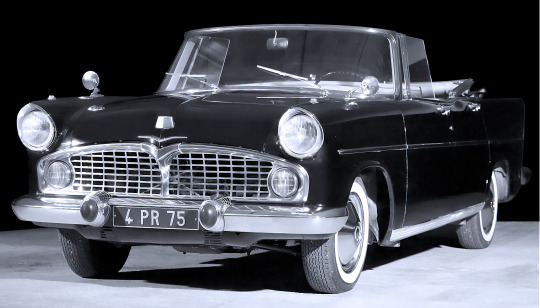

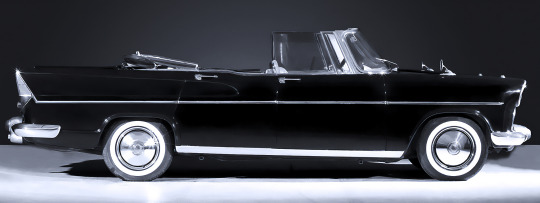

Simca Vedette Presidence Cabriolet, 1957, by Chapron. The V8-engined Vedette was Simca's large luxury car that had its origins in Ford's French subsidiary which Simla acquired in 1954. The Simca mimicked American styling with some sales success. French coachbuilder Henri Chapron built this 4-door convertible based on the second generation Vedette for President Charles de Gaulle and subsequently the Presidence model name was used for the flagship version of the car featuring a luxurious interior, a radiotelephone (a European first).
#Simca#Simca Vedette#Simca Vedette Presidence#chapron#hercules#Henri Chapron#V8#Charles de Gaulle#ceremonial car#open roof#one-off
119 notes
·
View notes
Text
The Evolution of Automobiles: A Journey Through Time

Introduction
The history of automobiles is a fascinating tale of innovation, determination, and human ingenuity. From the earliest steam-powered contraptions to the sleek electric vehicles of today, cars have shaped our lives, economies, and landscapes. Let’s embark on a journey through time to explore the milestones, inventors, and revolutions that define the world of automobiles.
1. The Pioneers
a. Nicolas-Joseph Cugnot and the Steam Carriage (1769)
In a small workshop in France, Nicolas-Joseph Cugnot built the first self-propelled vehicle. His steam-powered carriage, known as the “Fardier à vapeur,” could carry passengers and cargo. Although slow and cumbersome, it marked the birth of the automobile.
b. Karl Benz and the Benz Patent-Motorwagen (1886)
Fast-forward to the late 19th century. Karl Benz, a German engineer, unveiled the Benz Patent-Motorwagen. It was the first true automobile powered by an internal combustion engine running on gasoline. With three wheels, a single-cylinder engine, and a top speed of 16 km/h (10 mph), the Motorwagen revolutionized transportation.
2. The Model T Era
a. Henry Ford and the Model T (1908)
Henry Ford’s vision was to make cars accessible to everyone. In 1908, he introduced the Model T, an affordable, mass-produced vehicle. The assembly line revolutionized manufacturing, and soon, millions of Model Ts rolled off the production line. The car became a symbol of progress and freedom.
3. The Roaring Twenties and Streamlined Designs
a. Art Deco and Streamlining
The 1920s witnessed a shift in car design. Art Deco influences brought elegance and symmetry to automobile aesthetics. Streamlining, inspired by aviation, emphasized sleek curves and aerodynamic shapes. Cars like the Chrysler Airflow and the Bugatti Type 57 exemplified this trend.
4. Post-War Boom and Muscle Cars
a. Post-World War II Boom
After World War II, car production soared. Families embraced sedans like the Chevrolet Bel Air and the Ford Fairlane. The 1950s saw tailfins, chrome, and optimism. Drive-in theaters and roadside diners became part of the American dream.
b. Muscle Cars and Horsepower Wars
The 1960s brought muscle cars—powerful, V8-engine beasts. The Ford Mustang, Chevrolet Camaro, and Dodge Charger ruled the streets. The horsepower wars escalated, and drag racing became a cultural phenomenon.
5. Environmental Concerns and Innovations
a. Oil Crisis and Compact Cars
The 1970s oil crisis shifted priorities. Compact cars like the Volkswagen Beetle and Toyota Corolla gained popularity. Fuel efficiency and emissions control became critical.
b. Hybrid and Electric Cars
In the 21st century, environmental awareness led to hybrid and electric vehicles. The Toyota Prius pioneered hybrid technology, while Tesla’s electric cars redefined performance and sustainability.
6. The Road Ahead: Autonomous Vehicles and Beyond
a. Autonomous Driving
Self-driving cars are no longer science fiction. Companies like Waymo and Tesla are pushing the boundaries of autonomy. The future promises safer roads and shared mobility.
b. Sustainability and Beyond
As we move forward, sustainability remains paramount. Hydrogen fuel cells, solar-powered cars, and urban mobility solutions will shape the next chapters in automotive history.
Conclusion
From steam carriages to electric supercars, the automobile’s evolution mirrors our progress as a society. Each turn of the wheel brings new challenges, innovations, and dreams. So, fasten your seatbelt—we’re still on an exhilarating ride
3 notes
·
View notes
Text

Henry Ford and wife Clara pictured in 1946 in the first car his company built back in 1896.
3 notes
·
View notes
Text
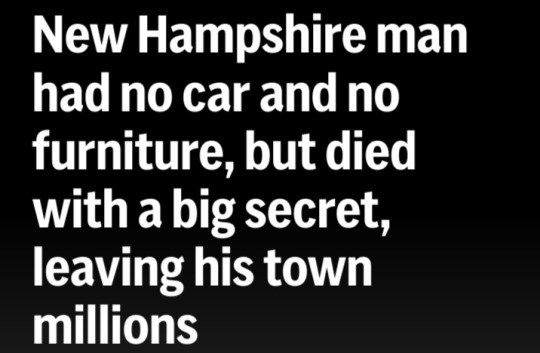

By KATHY McCORMACK and ROBERT F. BUKATY
November 21, 2023
HINSDALE, N.H. (AP) — Geoffrey Holt was unassuming as the caretaker of a mobile home park in Hinsdale, New Hampshire, where he lived a simple, but curious life.
Residents would see Holt around town in threadbare clothes — riding his lawn mower, headed to the convenience store, parked along the main road reading a newspaper or watching cars pass.
He did odd jobs for others but rarely left town. Despite having taught driver’s ed to high schoolers, Holt had given up driving a car.
He opted for a bicycle instead and finally the mower.
His mobile home in the park was mostly empty of furniture — no TV and no computer, either. The legs of the bed went through the floor.
“He seemed to have what he wanted, but he didn’t want much,” said Edwin “Smokey” Smith, Holt’s best friend and former employer.
But Holt died earlier this year with a secret: He was a multimillionaire.
And what’s more, he gave it all away to this community of 4,200 people.
His will had brief instructions: $3.8 million to the town of Hinsdale to benefit the community in the areas of education, health, recreation and culture.

“I don’t think anyone had any idea that he was that successful,” said Steve Diorio, chairperson of the town selectboard who’d occasionally wave at Holt from his car.
“I know he didn’t have a whole lot of family, but nonetheless, to leave it to the town where he lived in ... It’s a tremendous gift.”
The money could go far in this Connecticut River town sandwiched between Vermont and Massachusetts with abundant hiking and fishing opportunities and small businesses.
It’s named for Ebenezer Hinsdale, an officer in the French and Indian Wars who built a fort and a grist mill.
In addition to Hinsdale’s house, built in 1759, the town has the nation’s oldest continually operating post office, dating back to 1816.
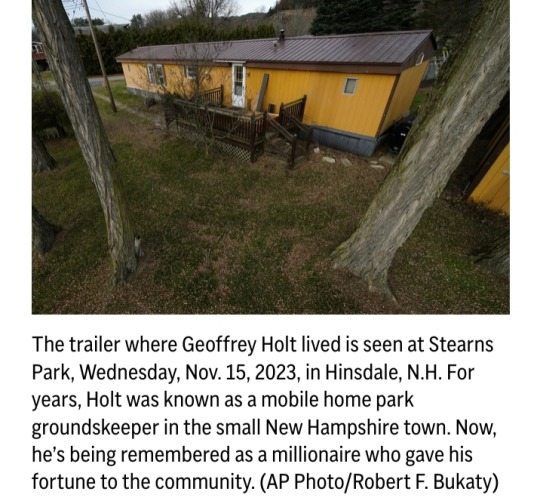
There’s been no formal gathering to discuss ideas for the money since local officials were notified in September.
Some residents have proposed upgrading the town hall clock, restoring buildings, maybe buying a new ballot counting machine in honor of Holt, who always made sure he voted.
Another possibility is setting up an online drivers’ education course.
Organizations would be be able to apply for grants via a trust through the New Hampshire Charitable Foundation, drawing from the interest, roughly about $150,000 annually.
"Hinsdale will utilize the money left very frugally as Mr. Holt did,” said Kathryn Lynch, town administrator.

Holt’s best friend Smith, a former state legislator who became the executor of Holt’s estate, had learned about his fortune in recent years.
He knew Holt, who died in June at age 82, had varied interests, like collecting hundreds of model cars and train sets that filled his rooms, covered the couch and extended into a shed.
He also collected books about history, with Henry Ford and World War II among his favorite topics.
Holt had an extensive record collection too, including Handel and Mozart.
Smith also knew that Holt, who earlier in life had worked as a production manager at a grain mill that closed in nearby Brattleboro, Vermont, invested his money.
Holt would find a quiet place to sit near a brook and study financial publications.

Holt confided to Smith that his investments were doing better than he had ever expected and wasn’t sure what to to do with the money. Smith suggested that he remember the town.
“I was sort of dumbfounded when I found out that all of it went to the town,” he said.
One of Holt’s first investments into a mutual fund was in communications, Smith said. That was before cellphones.
Holt’s sister, 81-year-old Alison Holt of Laguna Woods, California, said she knew her brother invested and remembered that not wasting money and investing were important to their father.
“Geoffrey had a learning disability. He had dyslexia,” she said.
“He was very smart in certain ways. When it came to writing or spelling, he was a lost cause. And my father was a professor.
So, I think that Geoff felt like he was disappointing my dad. But maybe socking away all that money was a way to compete.”
She and her brother grew up in Springfield, Massachusetts. Their father, Lee Holt, taught English and world literature at American International College.
Their mother, Margaret Holt, had a Shakespearean scholar for a dad.
She was an artist who “absorbed the values of the Quaker Society of Friends,” according to her obituary.
Both parents were peace activists who eventually moved to Amherst and took part in a weekly town vigil that addressed local to global peace and justice issues.
Their children were well-educated. Geoffrey went to boarding schools and attended the former Marlboro College in Vermont, where students had self-designed degree plans.
He graduated in 1963 and served in the U.S. Navy before earning a master’s degree from the college where his father taught in 1968.
In addition to driver’s ed, he briefly taught social studies at Thayer High School in Winchester, New Hampshire, before getting his job at the mill.
Alison remembers their father reading Russian novels to them at bedtime.
Geoffrey could remember all those long names of multiple characters.
He seemed to borrow a page from his own upbringing, which was strict and frugal, according to his sister, a retired librarian.
His parents had a vegetable garden, kept the thermostat low, and accepted donated clothes for their children from a friend.
She said Geoffrey didn’t need a lot to be happy, didn’t want to draw attention to himself, and might have been afraid of moving.
He once declined a promotion at the mill that would have required him to relocate.
“He always told me that his main goal in life was to make sure that nobody noticed anything,” she said, adding that he’d say “or you might get into trouble.”
They didn’t talk much about money, though he would ask her often if she needed anything.
“I just feel so sad that he didn’t indulge himself just a little bit,” she said.
But he never seemed to complain. He also always wasn’t on his own, either.
As a young man, he was briefly married and divorced.
Years later, he grew close to a woman at the mobile home park and moved in with her. She died in 2017.
Neither Alison nor Geoffrey had any children.
Holt suffered a stroke a couple of years ago and worked with therapist Jim Ferry, who described him as thoughtful, intellectual and genteel, but not comfortable with following the academic route that family members took.
Holt had developed mobility issues following his stroke and missed riding his mower.

“I think for Geoff, lawn mowing was relaxation, it was a way for him to kind of connect with the outdoors,” Ferry said.
“I think he saw it as service to people that he cared about, which were the people in the trailer park that I think he really liked because they were not fancy people.”
Residents are hoping Hinsdale will get noticed a bit more because of the gift.
“It’s actually a forgotten corner in New Hampshire,” said Ann Diorio, who’s married to Steve Diorio and is on the local planning board. “So maybe this will put it on the map a little bit.”


#Geoffrey Holt#Hinsdale#New Hampshire#Edwin “Smokey” Smith#Steve Diorio#Ebenezer Hinsdale#New Hampshire Charitable Foundation#Alison Holt#Jim Ferry#Ann Diorio#mobile home park#multimillionaire#donation#good deeds
3 notes
·
View notes
Text
For almost two decades after it opened in 1913, Michigan’s Central Station was a major stop on the nation’s interurban rail network. Then the private car took over the US, and Detroit declined. By the 1970’s, auto jobs were leaving the state and the country and local corruption was soaring. At the turn of the century, the train depot and the 18-story office towers behind it had been abandoned for 30 years, the faded exterior looming over Detroit’s Corktown and Mexicantown neighborhoods, a sign that things were going very poorly in Detroit.
By 2018, the city and Ford Motor Company were ready to tell another story. That year, Ford announced that it had acquired the station and the area surrounding it, a monument to the kind of transportation past that the automaker and its manufacturing brethren had all but killed.
Today, Ford executives and city government and community leaders will hold an opening ceremony for one building on the station’s new campus, part of a $950 million project it is calling Michigan Central. (The state of Michigan contributed some additional $126 million in new and existing financing to the project.) The new building, called the Book Depository, will serve as an innovation collaboration space for transportation entrepreneurs and researchers.
Bill Ford, executive chair of Ford, says the campus’ redevelopment is a sign. “Michigan Central will go from being a story about Detroit’s decay to the story about Detroit’s rebirth,” he says, a second act that will see the city become home to tech- and auto-centric jobs that will build the next generation of transport. “This will be the first tangible evidence that that vision is coming to life,” says Ford, who is also a great-grandson of both company founder Henry Ford and tire magnate Harvey Firestone.
Ford is part of a broader movement to revitalize downtown Detroit, though its effects are not yet clear. Detroit lost almost half of its population between 1950 and 2000. Though new downtown sports stadiums, restaurants, and housing developments have strengthened the case of local optimists who see a resurgence underway, recent US censuses suggest that the region continued to bleed residents in the past decade, perhaps due in part to the Covid-19 pandemic. (The city has sued the US Census Bureau over the results, alleging that feds undercounted minority residents, which affects government funding.)
Ford expects many other businesses to move onto the 30-acre Michigan Central campus, which includes 14 acres of park space open to the public. Today’s opening focuses on the Book Depository, a nearly 100-year-old building across the street from the Central Station that once played host to the Detroit public schools’ store of books, records, and supplies. Now, it will serve as a 270,000-square-foot maker and startup space focused on mobility, a potential spawning ground for future Ford partners. Even before the building’s official opening today, more than 25 companies representing 150 employees have taken up residence at the Book Depository, Michigan Central officials say, representing firms working on autonomous and electric vehicles, roadways built just for robot cars, and air pollution. They are all associated with an organization called Newlab, a manufacturing incubator that has already launched an innovation space in Brooklyn’s Navy Yard.
The Book Depository’s space is designed to encourage collaboration, says Joshua Sirefman, who as CEO of Michigan Central has led the project’s development and programming. Although the building’s general structure has been preserved, changes have been made to bring it in line with contemporary expectations of premium office space. One example: A series of small skylights that collapsed during the 35 years the structure was vacant were replaced by one large skylight, creating what Sirefman calls a “really extraordinary, naturally lit central space, which I think gives us an incredible communal energy.”
The campus’ opening represents Ford doubling down on its side of a long-simmering conflict between Detroit and Silicon Valley. One origin of the dispute is the moment in 2003 when a bunch of guys got together in San Carlos, California, in Silicon Valley, to found a company called Tesla Motors. Since then, Tesla has used its software chops and a move-fast-and-break-things approach to auto manufacturing to become the most valuable car company in the world. Ford wants to prove that it can do the tech stuff too.
When the Michigan Central project was announced in 2018, “Detroit wasn’t even in the game,” says Ford of the race to infuse autos with tech. “But we are now, and what we provide at the Book Depository building and in the region is the ability to bring together hardware and software in a way that can’t be done elsewhere.”
Office workers will begin to move into the updated Michigan Central towers behind the historic station in 2024, says Sirefman, though exactly who will work out of the renovated space isn’t yet clear.
Ford announced in 2018 that 5,000 people, half of them the company’s own employees, would work out of the updated train station. But the automaker has moved to a hybrid working model since the pandemic, spokesperson Daniel Barbossa says, so “we have opened up our Ford spaces to be focused on flex space and collaboration.” Updated occupancy numbers will come later this year, he says. Ford has announced that local high school students in a Google-sponsored mentorship program will work out of a lab in the station; 50 students are already enrolled in the program, which is temporarily housed in another building on the campus.
Corktown, the neighborhood to the east of Michigan Central, is a trendy district that was once home to Tiger Stadium but has since become a nightlife destination. Housing and rental prices there have jumped since the announcement of the Ford project. But Ford, the company’s executive chair, believes the project will be beneficial even to those who don’t work on the campus. “In some ways, a rising tide lifts all boats,” he says.
Rohani Foulke, owner of Folk, a cafe and wine shop that has for almost a decade sat a 10-minute walk from the Central Station, is hopeful the project can boost local businesses that have suffered during the pandemic. “We’re very excited about the project, really in the hopes that it helps bring some regular foot traffic into the neighborhood,” she says. Foulke will also be glad to see the constant construction abate—not only of the Michigan Central campus, but of other developments in the area. “There are insane amounts of noise and dust,” she says. “I can’t tell you how much dust we have to deal with.”
All that dust is a reminder that there is plenty of other work left to do in Detroit, where nearly a third of residents still live in poverty. Brian Boyer, who directs a new degree program in urban technology at the University of Michigan, finds Ford’s ambition—making Detroit the center for transportation innovation—a good one, but insufficient. The city’s future must be broader than cars, trains, and wheels, says Boyer, who is a consultant on one part of Ford’s Michigan Central project. “No matter how successful we are with mobility, the apex for that was the beginning of the 20th century,” he says. “The region needs to have a bigger purpose—a bigger story that we’re asking people to be part of.”
3 notes
·
View notes
Text
If I see one more post like this I’ll start fighting people.
Context matters. Context changes everything. I don’t have any special interest in Henry Ford or in the progression of capitalism (or the work week or anything related) in the US, but things like these are so simple to learn just the bare minimum. Open up a history book and use your brain once in a while, I’m sure it would appreciate the exercise.
Working conditions were shit for the majority of people up to this point, in particular for blue collar and middle class workers. He adopted the five day work week which was a more humane workweek and made major steps in ensuring people were actually paid adequately for their time and craft. He also basically pioneered a functioning assembly line that cut down a HUGE amount of workplace related injuries or deaths. People rushed to work for him. That’s why the automotive industry boomed during this period as he expanded to accommodate more workers and, in turn, more demand for his cars.
He also wanted to ensure that everyone working for him would be able to afford the product they built.
For a LOT of people this was the first time ever that an employer was paying fairly and offering livable working conditions. Which also meant that a lot of those men took pride in what they were creating.
Which in turn fed into why the US is such an automobile-centered country. It is part of our culture, not just capitalist-driven greed.
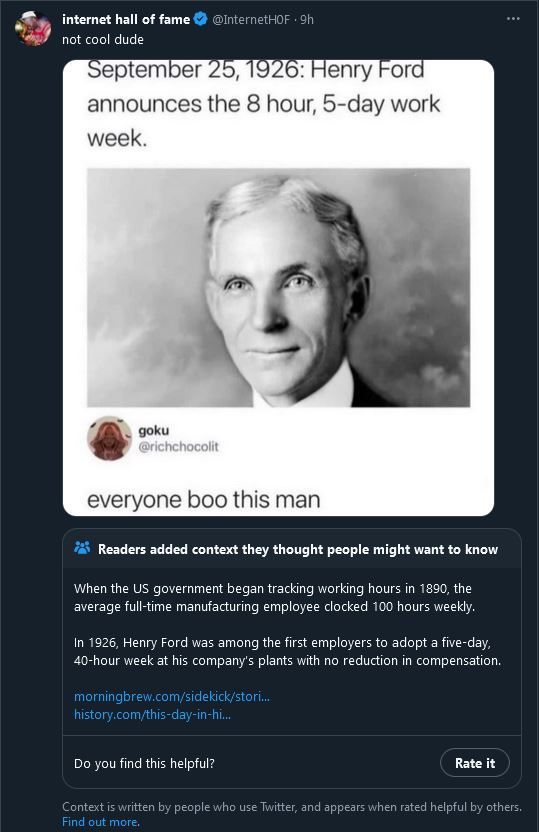
#of course good luck finding a history book that hasn’t literally been rewritten#the way these new ones are twisted to serve whatever current message is being pushed is quite literally propaganda and brainwashing 101#facts are easy to manipulate and critical thinking is being taught as a farce#Goebbels would have had a field day in this era and we just keep proving our willingness to be hand-fed information at every turn#even in small “unimportant” things like this#Henry Ford fits the idea of the type of person we should hate now so naturally we will. no questions asked#life and history are so rarely black and white and forcing it to be is doing untold damage to our society and our culture#history#politics#idk
4K notes
·
View notes
Text
So people used to just ride on the horseback, then they invented the buggies, let the horses pull, then they invented the replacement for the buggy, the model t!!!
So look at the progress, people always thought that was the pinnacle.We can't do any better holiday going to ever.Get better than the horse and buggy!!!!
So you see the horse and buggy, it was around for 5 hundred years because people thought nothing could get better than the horse and buggy!!!! When we were getting buried in h********!!
Do you know what New York smell like? It smelled like s***, literally smelled like poop, it smelled unbelievably disgusting!!!!!! 😑
Yes, New York City was covered in horse manure in the early 1900s:
The problem
New York City had over 100,000 horses in 1900, and each horse produced 15–35 pounds of manure per day. This amounted to 2.5 million pounds of manure per day in the city.
The effects
The manure covered the streets, attracted flies, and created a health hazard:
Disease: The manure and rotting horse carcasses spread disease.
Pests: The manure attracted rats and other disease-transmitting insects.
Walking: It was difficult to walk anywhere without getting dirty.
Solutions
The problem was eventually solved by the introduction of motorized vehicles, including:
Motor cars
Electric trams
Motor buses
The Great Horse Manure Crisis of 1894
The phrase "Great Horse Manure Crisis of 1894" is used to describe a problem that seems impossible to solve, but is actually solved by new technologies.
The elevated staircases
The elevated staircases that are a distinctive feature of New York City were built to avoid the manure.
The Great Horse Manure Crisis of 1894
Historic UK
This in turn attracted huge numbers of flies, and the dried and ground-up manure was blown everywhere. In New York in 1900, the population of 100,000 horses produced 2.5 million pounds of horse manure per day, which all had to be swept up and disposed of.
https://fee.org › articles › the-great...
The Great Horse-Manure Crisis of 1894 - FEE.org
The horse and buggy was invented in Hungary in the 14th century. It was an improvement on the chariot, which was used for war by ancient civilizations. The buggy was more comfortable and spacious, and was used in processions by the nobility.
Here are some other notable events in the history of horse-drawn vehicles:
Passenger coaches
Evolved in the 14th century, with larger rear wheels and a shaped body. This made them more comfortable for passengers and allowed them to be pulled by a single horse.
Pageant wagons
A 14th century carriage that was a miniature house-like structure on four to six wheels.
Kocsi
Invented in the 15th century in the village of Kocs, Hungary. This open carriage had a wooden frame with wickerwork sides and raised seats above the larger back wheel.
Farm wagons
A basic, all-purpose wagon used to haul crops, supplies, and people in the late 19th century.
Carriage - Wikipedia
Another form of carriage was the pageant wagon of the 14th century. Historians debate the structure and size of pageant wagons; however, they are generally mini...
Wikipedia
1908
The Model T was introduced to the world in 1908. Henry Ford wanted the Model T to be affordable, simple to operate, and durable. The vehicle was one of the first mass production vehicles, allowing Ford to achieve his aim of manufacturing the universal car.
https://corporate.ford.com › history
The Model T - Ford Corporate
So no, you shouldn't be stopping progress. This is why we have global warming and all these horrible issues. Because people interfere with progress like interfere with me. You should burn an eternal f****** damnation. You're a f****** piece of f****** no good s***You're a satanic f****** piece of c***!!!!
So if the news fails to move forward, then the news is incredibly satanic compredibly pieces of unbelievable filth in disgust and disgrace!!!!
I watched the oil industry when oil prices plummeted. No big deal, we'll just innovate, and they innovated and create it a building to turn on and turn off pumps and refine it and lower costing and save levie. I'm holding the holy fire to you.Either get better or be put into waste!!!! But no, you wanna protect alternative lifestyle and all that they should be plowed under ten feet under!!!!! So make no mistake where they should be going to eternal damnation¡¡¡¡¡ you turned the cross upside down and you're protecting satanistic activities everywhere!!!!
Bible Hub
https://biblehub.com › leviticus
Leviticus 20:13 If a man lies with a man as with a woman, they have ...
And if a man lie with mankind, as with womankind, both of them have committed abomination: they shall surely be put to death; their blood shall be upon them.
Missing: damnation | Show results with: damnation
Bible Gateway
https://www.biblegateway.com › v...
Leviticus 20:13
If a man lies with a male as with a woman, both of them have committed an abomination; they shall surely be put to death; their blood is upon them.
Missing: Eternal damnation
It would literally turn the church on its head in a church of satan!!!!! So is Facebook in the sensitive news and censor these Bible quotes is Facebook literally going to go into the Bible and change the Bible? Is Facebook God? Facebook is not god!!!! There might be a contributor like me that has that ability, but facebook, it's not god!!!! Facebook has to make a choice if it's going to be a friend of god or the enemy of god????????? And that's what god is watching, as he told me who is my friend and who is my enemy who is a friend of god and who is an enemy of god!!!!! And I tell people, I don't condemn you, you condemn yourself.Be the enemy of god and be condemned!!!
As it says here, he will wipe out thy enemies. He will destroy them!!!!
Deuteronomy 33:27
"The eternal God is thy refuge, and underneath are the everlasting arms: and he shall thrust out the enemy from before thee; and shall say, Destroy them"
Here are some Bible verses that mention God's actions against enemies:
Deuteronomy 33:27
"The eternal God is thy refuge, and underneath are the everlasting arms: and he shall thrust out the enemy from before thee; and shall say, Destroy them"
Isaiah 59:18-19
"He will punish his enemies according to what they have done, even those who live in distant lands. From east to west everyone will fear him and his great power. He will come like a rushing river, like a strong wind"
Isaiah 54:17
"No weapon formed against you shall prosper, and every tongue which rises against you in judgment you shall condemn"
The Bible also includes verses about how to treat enemies, such as:
Luke 6:27-30
"Love your enemies, do good to those who hate you, bless those who curse you, pray for those who mistreat you"
Romans 12:20
"If your enemy is hungry, feed him; if he is thirsty, give him something to drink. In doing this, you will heap burning coals on his head"
Genesis 50:20
"You intended to harm me, but God intended it for good to accomplish what is now being done, the saving of many lives"
16 Top Bible Verses about Enemies - Encouraging Scripture
Exodus 23:22. 22 If you listen carefully to what he says and do all that I say, I will be an enemy to your enemies and will oppose those who oppose you. Read Ch...
Bible Study Tools
Instead of companies going under the other way, the good way by failing to innovate by failing to keep up their employees with their education and abilities, and they go by the wayside because of obsolescence, they destroyed themselves!!! You wanna stifle competition? And allow those that shouldn't survive survive, and you're creating larger and larger, what labor shortages by not plowing under those that need to be plowed under!!!!!
So do you know what creates the best market? Volatility? Heavy heavy competition and those companies that don't strive for the absolute excellence, they lose and rightfully so and the other company wins, they fall short and the other company gobbles them up!!! So you're not supposed to stifle me, but you're supposed to allow me to propel forward and crushed, whoever I need to crush!!!! And they have to do all they can righteously, to survive!!! And if they can't, they get plowed under!!!!
Companies can go under due to obsolescence when their products or services become outdated and no longer meet market demands, leading to a significant drop in sales and profits, as consumers opt for newer, more advanced alternatives, ultimately causing the company to struggle financially and potentially face closure; this can happen if they fail to innovate or adapt to changing technology quickly enough, leaving them stuck with outdated products that no one wants to buy anymore.
Key points about obsolescence and business failure:
Lack of innovation:
If a company doesn't invest in research and development to stay ahead of the curve, their products can quickly become obsolete, leaving them unable to compete with newer options.
Perceived obsolescence:
Even if a product still functions well, aggressive marketing tactics can convince consumers that it's outdated, leading them to buy newer models, even if the improvements are minimal.
Rapid technological change:
Industries with fast-paced technological advancements, like electronics or software, can quickly render older products obsolete, putting pressure on companies to constantly update.
Failure to adapt to market shifts:
If consumer needs or preferences change, and a company doesn't adjust their product line accordingly, they can lose market share and become vulnerable to failure.
Examples of companies impacted by obsolescence:
Kodak:
The company struggled to adapt to the digital photography revolution, leading to significant financial losses as their film-based cameras became obsolete.
Blockbuster:
The rise of streaming services like Netflix made traditional video rental stores like Blockbuster largely irrelevant, resulting in their downfall.
Pagers:
Once a vital communication tool, pagers were quickly replaced by mobile phones, leaving companies that primarily produced pagers struggling to stay afloat.
How companies can mitigate obsolescence risk:
Continuous innovation:
Regularly invest in research and development to create new products and features that stay ahead of the market.
Product lifecycle management:
Understand the lifecycle of products and plan for updates and replacements to maintain relevance.
Market research:
Stay informed about emerging trends and consumer needs to identify potential areas for new product development.
Diversification:
Expand into related markets or product lines to mitigate dependence on a single product that could become obsolete.
Planned Obsolescence: Why is it a problem? - Iberdrola
How often do you get a new mobile phone? And how about a computer? Or a TV? The chances are you have been 'upgrading' more frequently in recent years due, to a ...
Iberdrola
https://www.google.com/search?ie=UTF-8&client=ms-android-comcast-us-rvc3&source=android-browser&q=How+companies+go+under+because+of+obsolescence
And do you know this prevents workers from being abused? Because companies have to invest in the workers, they have to educate them. They have to keep them healthy and productive and happy. So they're productive, read the book good to great taking them from good to great, and the greatest companies have never laid off a single employee. And they understand survival of the fittest, and they invest in their corporations, like ed vanguard, they gave us a ten thousand dollar stipend every year for education!!!! I was going to use it to complete my undergrad. In grad school, but I was taken off of course, and I would have gone there, not only my graduate, my phd, and many other!!!!
In business, "survival of the fittest" means that the companies best adapted to their market conditions, including customer needs and changing trends, are most likely to survive and thrive, while those that cannot adapt will eventually fail, mirroring the concept of natural selection in biology where only the best-suited organisms persist; essentially, it emphasizes the importance of flexibility and innovation to stay competitive in the market.
Key points about "survival of the fittest" in business:
Adaptation is key:
Companies that can quickly adapt to changing market dynamics, new technologies, and consumer preferences are more likely to succeed.
Competitive advantage:
The "fittest" companies usually have a competitive edge in terms of product quality, pricing, customer service, or innovation.
Market forces drive selection:
Just like in nature, the market naturally selects companies that are best suited to meet customer demands, causing less adaptable businesses to struggle.
Criticisms of the "survival of the fittest" concept in business:
Unethical practices:
Some argue that a strict interpretation of "survival of the fittest" can lead to unethical behavior as companies prioritize profit above all else, potentially exploiting customers or employees.
Focus on competition over collaboration:
A strong emphasis on "survival of the fittest" can foster a cutthroat business environment, discouraging collaboration and partnerships.
Why a Survival of the Fittest Mentality is Bad for Business ( ... - LinkedIn
Jul 26, 2023 — Employees were encouraged to cut corners and take risks, even if it meant breaking the law. This eventually led to the company's downfall. Another e...
LinkedIn
https://www.google.com/search?ie=UTF-8&client=ms-android-comcast-us-rvc3&source=android-browser&q=The+law+of+survival+of+the+fittest+in+business+normali
Hi, boss Nick. He was so happy with me. He wanted me to be an example. I was an example to all the other employees advancing their education.He was a big big it's a porter of advanced education and getting and smart as you can humanly become!!!! These companies know it, they want their employees to be the sharpest.In the world!!!
Scholly
https://www.myscholly.com › 50-c...
50 Companies with Amazing Tuition Reimbursement Programs
Apr 22, 2021 — Let's look at the 50 companies that offer amazing tuition reimbursement programs for college, graduate school, continuing education programs, and more!
Many companies offer tuition reimbursement as an employee benefit, including:
Publix
Full- and part-time employees who have worked at least six months can receive up to $3,200 per year in tuition reimbursement
Capital One
Part-time associates can receive up to $2,500 per year in tuition reimbursement
Chipotle
Both hourly and salaried employees can receive up to $5,250 per year in tuition reimbursement
FedEx
Employees can receive up to $5,250 per year in tuition reimbursement
T-Mobile
Part-time employees can receive up to $2,500 per year in tuition assistance at an accredited college
Target
Offers a range of education benefits, including the Dream to be Program, which funds partial and full tuition for select college courses
Oracle
Employees can receive up to $5,250 per year in tuition reimbursement for programs that have been approved by management
Kroger
Offers full-time and part-time employees up to $3,500 per year, or up to $21,000 over the course of their employment with the company
Discover
Offers access to online partner programs, with up to 100% of tuition covered depending on the program chosen
Tuition reimbursement can be a compelling benefit for employees because it:
Allows employees to pursue additional degrees, certifications, or courses
Can incentivize employees to remain at the company
Can help employees pay for college, which is becoming more expensive
25 Companies with College Tuition Reimbursement Programs | Get Schooled
Feb 14, 2024
Get Schooled
And this means these companies can continuously innovate, because their employees are so sharp, they continuously are able to innovate and meet the market and beat competitors!!!
https://www.google.com/search?ie=UTF-8&client=ms-android-comcast-us-rvc3&source=android-browser&q=The+best+companies+offer+tuition.Reimbursement+it%27s+one+thing+that+I
What do you think Asians are about? I never seen such fierce competition. When I was in the asian church pushing the envelope of education, all the asian churches and all the people that are around that were asian, we're pushing the envelope of education, even Simon Yoo... he also push his education, he went to I think west minister biblical education and he went to many biblical. Education seminars, and he was pushing himself in every way. Not only to be the best doctor but to be the best doctor with spirituality as well.To bring massive spirituality to his patients to the people he worked with and he was pushing the edge of education in his religious studies as well!!!
Educating your employees "pays off" because it leads to increased productivity, improved employee engagement, higher retention rates, better quality work, and a more adaptable workforce, ultimately contributing to a stronger bottom line for the company by minimizing losses and maximizing revenue through skilled employees who are more likely to stay with the organization.
Key benefits of employee education:
Enhanced skills and performance:
Employees with proper training are better equipped to handle their responsibilities, leading to improved quality of work and efficiency.
Increased job satisfaction and engagement:
When employees feel supported in their professional development, they are more likely to be engaged and motivated in their roles.
Reduced employee turnover:
Investing in employee education signals a commitment to their career growth, which can encourage them to stay with the company longer.
Improved adaptability to change:
Continuous learning helps employees stay updated with industry trends and new technologies, making them more adaptable to evolving business needs.
Positive impact on company culture:
A culture that values learning and development can foster collaboration, innovation, and a positive work environment.
Attracting top talent:
Companies that offer robust employee development programs can attract high-quality candidates seeking career growth opportunities.
The Benefits of Investing in Employee Development | Criteria Corp
May 2, 2024 — If you apply this basic psychology to your training philosophy, you'll see that an upfront investment in your employee's development pays off: the re...
Criteria Corp
In other words, educated employees often produce a greater output for their company. This productivity increase almost always pays for the investment cost of the employee benefits packages and any other costs.Oct 11, 2023
https://partners.pennfoster.edu › 7-...
7 Ways Education Benefits are a Win-Win for Companies
https://www.google.com/search?ie=UTF-8&client=ms-android-comcast-us-rvc3&source=android-browser&q=Why+educating+your+employees+pays+off
There are several places to study religion at Westminster, including Westminster Theological Seminary, Westminster College, and Westminster School:
Westminster Theological Seminary
Offers a Master of Arts in Religion program that includes training in biblical languages, systematic theology, and church history. Students also receive practical ministry training, including homiletics, pastoral counseling, and leadership development. Westminster Theological Seminary is accredited by the Middle States Commission on Higher Education and the Commission on Accrediting of the Association of Theological Schools.
Westminster College
Offers an Interfaith Studies program that provides students with an understanding of different faith traditions and their significance in world events and human life. Students also analyze the implications of religious and secular behavior within different cultures.
Westminster School
Offers a Theology and Philosophy Department that teaches students to analyze ideas, explore systems of thought, and ask what it means to believe. The department seeks to explore the intellectual foundations of Western philosophical thought and Judaeo-Christian culture.
Department of Philosophy & Religion - Westminster College
The Interfaith Studies program will provide an understanding of faith traditions in most of their various historically significant forms. The minor provides a v...
Westminster College
The Philosophy and Religious Studies major at Westminster College provides a flexible and interdisciplinary framework in which you can pursue questions about free will and responsibility; the scope and nature of knowledge; contrasting perspectives on environmental ethics; social justice and our obligation to promote a ...
https://www.wcmo.edu › programs
Philosophy and Religious Studies - Westminster
https://www.google.com/search?ie=UTF-8&client=ms-android-comcast-us-rvc3&source=android-browser&q=Studying+religion+at+westminster
It's like Laura in my small group. She left her legal practice to pursue her p h d in theology at wheaton!!!
Description of PhD Program
The program aims at fostering faithfulness to the teaching of Scripture in combination with creative and critical reflection on its significance for the church and contemporary culture. Students may focus on either Biblical Theology or Systematic/Historical Theology.
https://hti.ptsem.edu › project › w...
Wheaton College - Hispanic Theological
https://www.google.com/search?ie=UTF-8&client=ms-android-comcast-us-rvc3&source=android-browser&q=Getting+a+p+h+d+in+theology+at+wheaton+university
My small group, we're a bunch of people who who were amazing at religious studies, religious scholarship!!!! They weren't only amazing at their work. They brought an incredible amount of unbelievable spirituality to every situation they went into!!!! 👏 and I truly do miss my small group!!!! My ex, jennifer kim, she was an unbelievable religious studies person.... See, I'll leave this truly unbelievably dedicated to knowing god is best she could!!!!!
Do you know at Vanguard they would constantly brag that the company from the beginning had has never laid off a single employee ever laid off an employee ever in its history. It has fired people, but it has never laid off anyone!!!!
Let's start off with the corporations who have never laid off a single employee in their existence!!!
CFO Brew
https://www.cfobrew.com › stories
Companies that have never laid anyone off
Aug 18, 2023 — These companies have never laid anyone off · Lincoln Electric: · Torani: · Nugget Markets: · Publix: · They treat employees well: ·
While no company can definitively claim to have "never" laid off an employee, some companies often cited as having a strong commitment to not laying off staff during economic downturns include Apple, ASM Pacific Technology, Atos, Agilent, CGI, Cloudflare, LG Electronics, and LITE-ON Technology; these companies are often mentioned as having a strong track record of avoiding layoffs even when other businesses are cutting staff.
Key points to remember:
No absolute guarantee:
Even companies with a reputation for avoiding layoffs may occasionally need to let go of employees due to extreme circumstances like major restructuring or severe economic crisis.
Focus on employee retention:
Companies that prioritize employee retention often explore alternative cost-cutting measures before resorting to layoffs.
Industry factors:
Certain industries may be more prone to cyclical layoffs based on market conditions.
Stronger together: List of companies that have refused to lay off employees
Stronger together: List of companies that have refused to lay off... * Apple. Apple is among the few big-tech companies that have not resorted to laying off em...
People Matters
https://www.google.com/search?ie=UTF-8&client=ms-android-comcast-us-rvc3&source=android-browser&q=In+good%2C+the+great+these+companies+never+laid+off+a+single+employee
But these companies invest in their employees and they make sure they're incredibly sharp so they can handle any challenge and overcome it, so they don't need to shrink, they adapt and adjust and continue forward!!!!! When you don't invest in your employees and they're not sharp, and if they don't want to get sharp, then the corporations going to sink!!! So if they don't wanna get sharp and stay sharp, then the corporation will sink, and if you don't invest in them, the corporation will sink!!!
What did the federal government do?Making sure our employees even after they get out of college?Stay as sharp as they can be offering the lifetime learning credit!!!
So the government needs to expand the lifetime learning credit. It needs to expand it and then index it for inflation, so it stays up with inflation of education and it can keep on offering a great credit to incentivize employees to advance themselves throughout their whole life!!! And this allows industries to adapt and change to trend. If they stay abreast of trend, they can see it coming. They inform employees about this credit and they incentivize them through bonuses, and that to go out there and get the training, they need to move the corporation forward!!! This was put in place to make sure america's the most competitive country in the world and stays the most competitive country in the world 🌎
This credit can help pay for undergraduate, graduate, and professional degree courses, including courses to acquire or improve job skills.
https://www.investopedia.com › lif...
Lifetime Learning Credit (LLC): Wha
IRS (.gov)
https://www.irs.gov › individuals › llc
Lifetime Learning Credit
This credit can help pay for undergraduate, graduate and professional degree courses — including courses to acquire or improve job skills
https://www.google.com/search?ie=UTF-8&client=ms-android-comcast-us-rvc3&source=android-browser&q=The+government+offers+the+lifetime+learning+credit+to+keep+employee+sharp
United States is number one. Export, it's intellectual properties. But what did American steel companies do when they became uncompetitive? What did they do they innovated? And became the most advanced metal makers in the world.The united states has the most advanced steel facile.These in the world, it produces the highest grade of steel in the world!!!!
The United States is the world's top exporter of intellectual property (IP), but it's not the only country that exports IP and there are other important exports for the US:
IP exports: In 2022, the US exported over $128 billion in IP, which was a record high.
Services exports: Services make up about a third of the US's total exports, and include travel, computer and business services, intellectual property protection, banking and insurance, and government contracts.
Goods exports: Major goods exported by the US include aircraft, medical equipment, refined petroleum, and agricultural commodities.
The US's top export companies include:
Chevron Corporation, which exports oil and gas
Apple, which exports computer hardware
Boeing, which exports aerospace
AbbVie, which exports pharmaceuticals
Cisco Systems, which exports communications equipment
Cross-border Payments for the Use of Intellectual Property (IP) ...
Jun 28, 2024 — Cross-border Payments for the Use of Intellectual Property (IP) surpass 1 trillion US Dollars in 2022, a record high. ... This growing global trade ...
World Intellectual Property Organization (WIPO)
World Intellectual Property Organization (WIPO)
https://www.wipo.int › news_0012
Cross-border Payments for the Use of Intellectual Property (IP) ...
Jun 28, 2024 — The United States remains the top IP exporter with over $128 billion, followed by Germany, Japan, and China. Switzerland leads in
https://www.google.com/search?ie=UTF-8&client=ms-android-comcast-us-rvc3&source=android-browser&q=America%27s+number+one+export+is+intellectual+capital
I used to talk to the c. F o a finkle steel in chicago and he talked about how they were innovating and coming up with the most advanced steel in the world, and that's how they were going to beat the competition by having the highest quality, the most advanced steel in the world and below, it agrees with me that the us.Metal industries is the most sophisticated companies in the world!!!
According to current information, the United States metal industry, particularly its steel sector, is widely considered to be one of the most advanced in the world, recognized for its high efficiency, advanced technologies, and focus on sustainability, making it a leader in terms of production methods and quality compared to many other countries; however, it is important to note that China remains the largest overall steel producer globally.
Key points about the US metal industry:
Technological advancements:
The US steel industry has heavily invested in automation, data analytics, and robotics to improve production efficiency and quality.
Environmental consciousness:
American steel producers are known for their commitment to cleaner production methods, reduced emissions, and high recycling rates, making them considered one of the most environmentally friendly steel industries globally.
High-quality steel production:
US steel companies are recognized for producing high-performance steel products, including advanced high-strength steels used in the automotive industry.
Global competition:
While considered advanced, the US still faces competition from other countries, particularly China, which has a larger overall steel production capacity.
A Brief History of the American Steel Industry
Jan 24, 2018 — Advanced High-Strength Steel The evolution of advanced high-strength steels (AHSS) continues to grow in application, notably in the automotive indus...
National Material Company
NAE Website
https://www.nae.edu › The-Rise-of-t...
The Rise of the US Steel Industry
Apr 9, 2024 — US steelmakers are the world leaders in making steel efficiently, using less energy and labor and fewer raw materials than
https://www.google.com/search?ie=UTF-8&client=ms-android-comcast-us-rvc3&source=android-browser&q=The+united+states+metal+industry+is+the+most+advanced+in+the+world
What did Allen Greenspan say to Congress? We need the foot at the fire and we need to push the evolution of the american citizen to become as advanced as possibly humanly possible, keeping the foot at their fire, the fire at their foot, so they constantly push push push their capabilities!!! He said, this is the only way america is going to remain number one.Anything else and will fall by the wayside!!! Then he said this to a joint meeting of congress!!!!
You will see companies that have the highest amount of highly educated employees do the best!!!
Which industry has the smartest people?
In human history, we have had the best minds in two professions - teaching and scientist (including medical scientists).
Based on the contributions these two professions have made towards advancement of human civilization, I would call all teachers and scientists the most smart people on earth.
More items...•Jan 20, 2016
https://www.quora.com › Which-in...
Which industry has the smartest peop
AVVA Experience
https://avvaexperience.com › the-s...
the Smartest Companies Leaderboards
Sep 20, 2023 — Welcome to the smartest company leaderboards · 1. Microsoft. 87% · 2. Gartner. 74% · 3. Amazon. 74% · 4. HSBC. 74% · 5. Hilton. 71% · 6. Coca-Cola. 70 ...
tech.co
https://tech.co › News
50 Smartest Companies in the World, According to MIT - Tech.co
Nov 2, 2017 — The editors of the MIT Technology Review put out a list of the 50 smartest companies in the world with elaborate and
https://www.google.com/search?ie=UTF-8&client=ms-android-comcast-us-rvc3&source=android-browser&q=Companies+that+have+the+smartest+employees+are+the+most+successful
Having top talent is critical for success, read below!!!!
Having top talent within your company is crucial for success because it drives innovation, boosts productivity, enhances your company's reputation, and allows you to tackle complex challenges with superior skills, ultimately leading to better results and a competitive edge in the market.
Key reasons why top talent contributes to company success:
Increased Innovation:
Highly skilled individuals often bring fresh perspectives and creative ideas, driving new product development and process improvements.
Higher Performance:
Top talent consistently delivers high-quality work, exceeding expectations and contributing significantly to achieving goals.
Problem-Solving Expertise:
Individuals with exceptional abilities can tackle complex issues with innovative solutions, leading to better decision-making.
Improved Employer Brand:
Attracting and retaining top talent enhances a company's reputation, making it more desirable to potential employees and clients.
Market Leadership:
By having a team of skilled professionals, a company can stand out from competitors and establish itself as a leader in the industry.
Positive Culture:
A workforce with high-performing individuals can foster a positive and collaborative work environment, boosting morale and engagement.
5 Reasons Why Attracting Top Talent is Crucial for Businesses
Apr 20, 2023 — Top talent drives innovation and productivity, often voicing new ideas that shape a company's direction. ... Enhancing Company Reputation and Brand ...
Valesco Industries
You can't give people anything they have to earn it. They have to be the best of the best for those positions!!!!
Without the fresh thinking and skill sets of top-caliber employees, your company will struggle to adapt to market shifts and drive true transformation. You'll quickly get outpaced by hungrier competitors. Subpar talent affects performance across the board.Jul 16, 2024
https://www.forbes.com › councils
Attracting Top Talent: Building A Company Where
https://www.google.com/search?ie=UTF-8&client=ms-android-comcast-us-rvc3&source=android-browser&q=Why+having+top+talent%3FWe%27ll+make+your+company+successful
So all of this pushes me to be the best. I can be and only pushing me to be the best. I can be will Mankind propel Ford and if you do things that are unbelievably punishing my health and holding me down, then these people are weaker than they should be and the world is worse off and the world will die only by me, being as strong as physically possible, mentally and physically. Will the world get pushed to its limits? And will cause evolution and revolution, or it will end, and you will all perish!!!! So go ahead and keep on hurting me and destroying yourself and giving it to these pieces of low life pieces of s*** that don't deserve it. Feel free to just give it away, and you will implode!!!!
So keep me without a woman. Keep you without a family, keep me impoverished. And you will end up destroying all of mankind.You are the fool, you are the idiot!!!
Watching Bloomberg Television as I put this together!!!!!
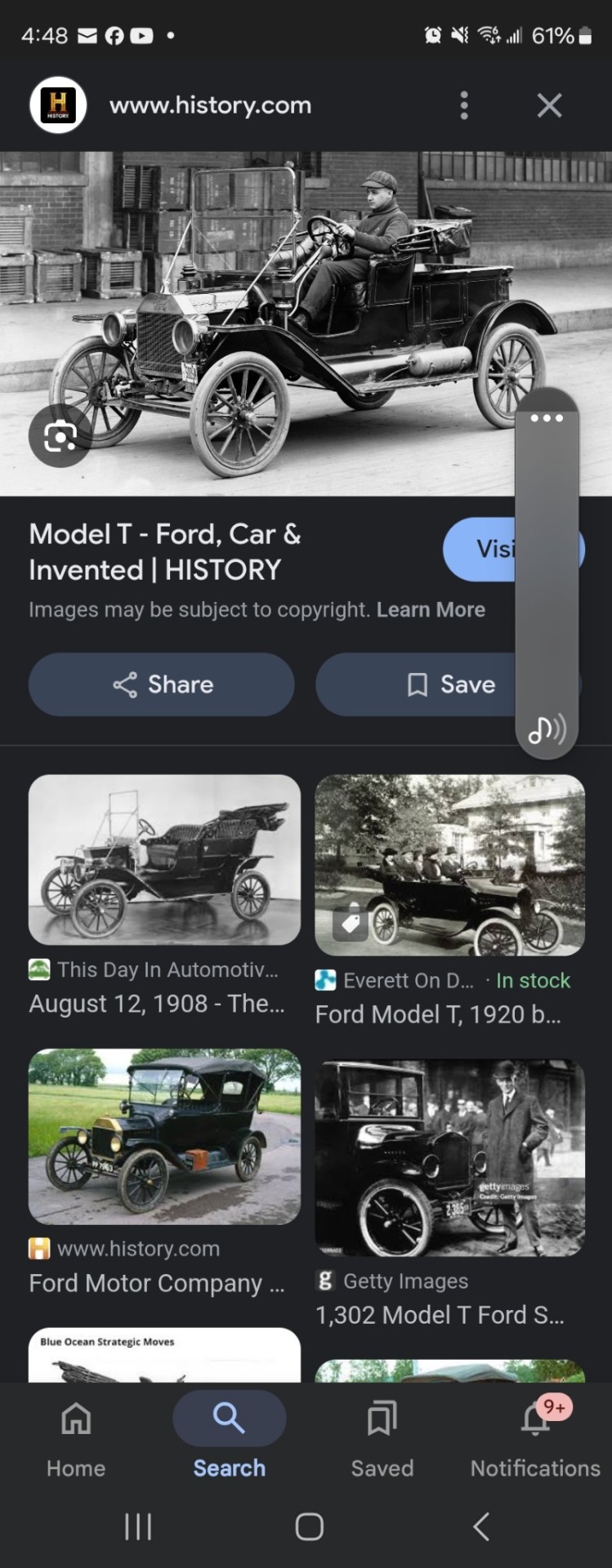

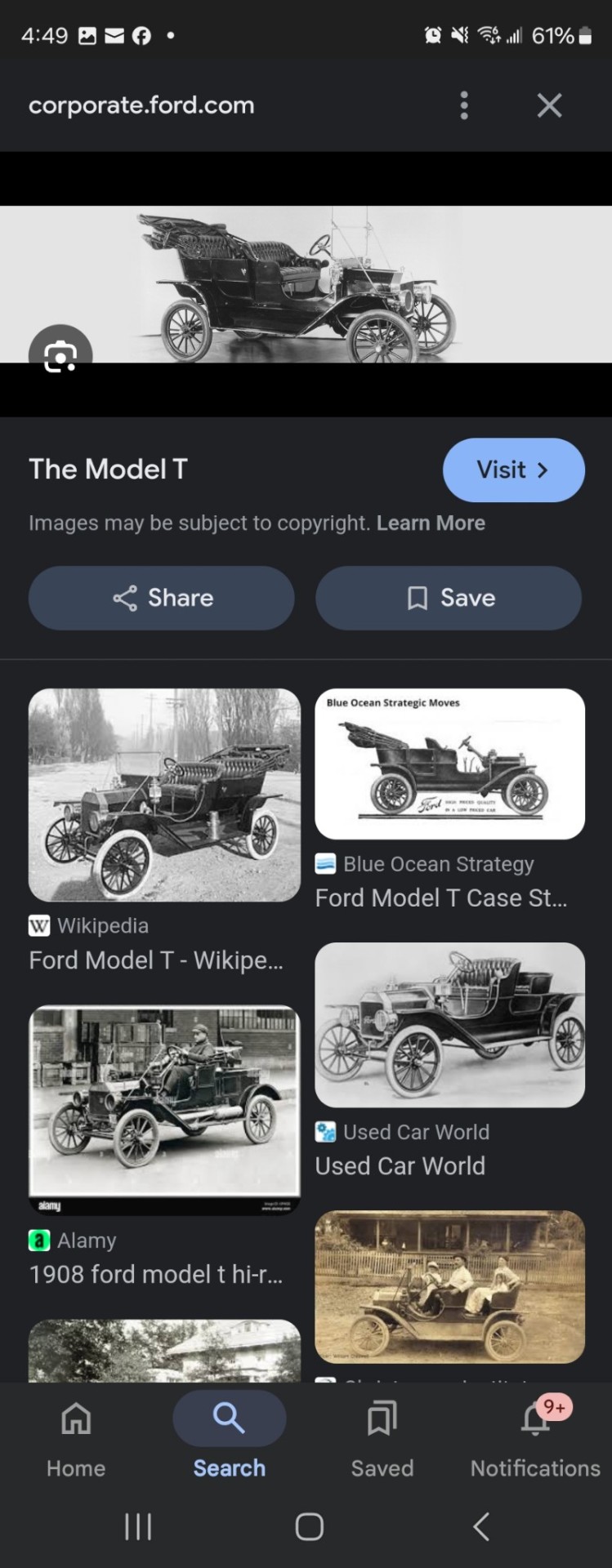

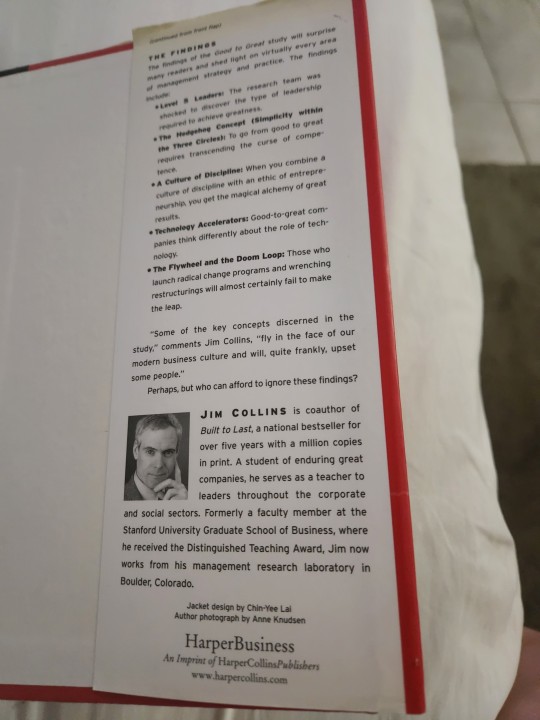
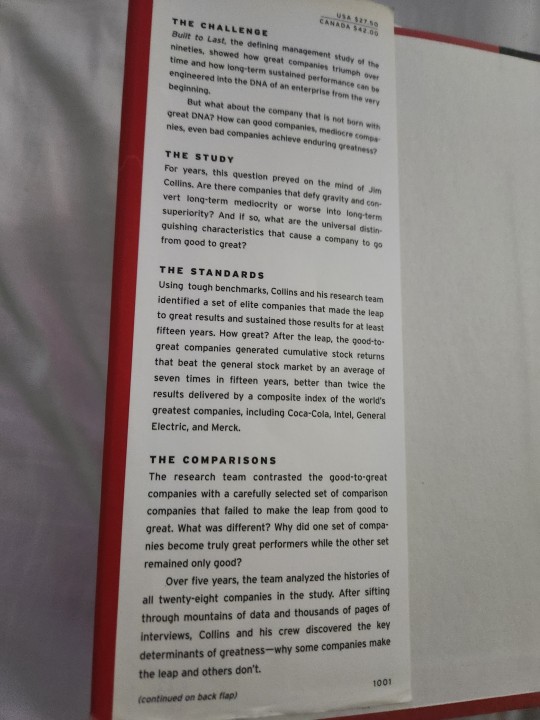
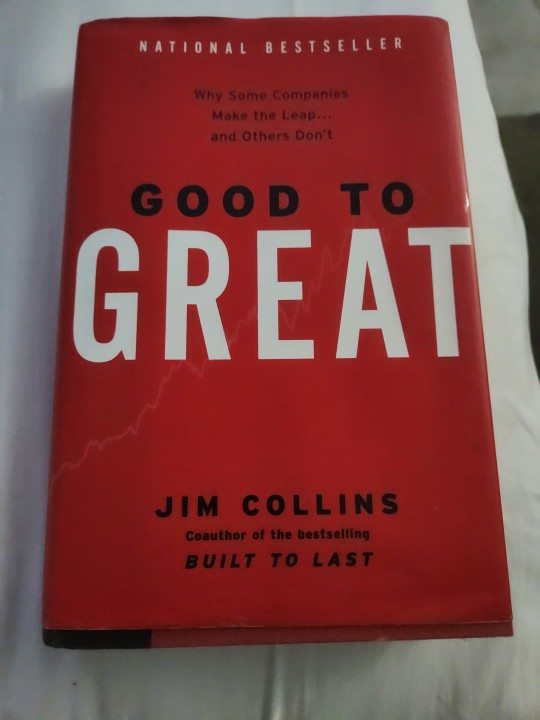



0 notes
Text
Journal 7
Downtown Fort Myers
The history of Downtown Fort Myers is that people have lived there for at least 14,000 years, dating back to the end of the last great ice age. Back then, the water was held in glaciers, the sea levels were lower than they are today and peninsular Florida was twice as wide as it is today, extending into what is now the Gulf of Mexico.
In the early 16th century, Spanish explorers encountered the Calusa, a powerful Native American group in Southwest Florida. The Calusa controlled much of the region, including the Miami area, and thrived on fishing, shellfishing, and hunting. They resisted Spanish efforts to settle, with the first attempts resulting in hostility and deaths, including that of Ponce de Leon. Spanish Jesuit missions were established but failed due to the Calusa's resistance.
By 1763, following European diseases, the Calusa population had dwindled significantly, with many fleeing to Cuba. The Caloosahatchee River, named by the Seminoles, means "River of the Calusa."

Fort Myers, originally established in 1841 during the Second Seminole War as Fort Harvie, was reoccupied and renamed during the Third Seminole War. It later played a role during the Civil War, being occupied by Black Federal troops. Monuments around the town commemorate the area's military history.
Cattle ranching in Florida began with early Spanish settlers who brought cattle to the New World. These cattle, known as "scrub" cattle, survived Florida's harsh climate and were later herded by pioneers to Jacob Summerlin's ranch near Punta Rassa. From there, cattle were shipped to Cuba for better prices. It wasn't until 1908 that Fort Myers passed an ordinance requiring cattle to be kept outside city limits, as they had previously roamed the streets. Today, cattle ranching remains an important part of Florida's economy.

Fort Myers was a busy working waterfront from the late 1800s to the 1920s, with citrus, vegetables, and fish shipped from river wharves. River transportation was key before the railroad reached the city in 1904. The Caloosahatchee Canal, completed in the 1890s, connected the river to Lake Okeechobee. Today, the city's waterfront focuses on parks and recreational areas like Centennial Park and the Yacht Basin.

The "Fathers of Industry" in Fort Myers, including Thomas Edison, Henry Ford, Harvey Firestone, and George Sanders, played key roles in the area's development. Edison sought ways to produce rubber locally for Firestone tires, which would then be used on Ford cars. George Sanders designed the Edison Mall, which opened in 1964 and shifted shopping from downtown.


The Old County Courthouse, built in 1915 in Classical Revival style, now houses the county commissioners' offices. In contrast, the modern courthouse/justice building has a more contemporary design reflecting the evolving needs of the community.


During the Great Depression, WPA projects like Centennial Park, the Yacht Basin, and the Old Post Office (now the Sydney and Berne Davis Art Center) helped provide jobs and boost the local economy.
The "City of Palms" features two Palm Parks showcasing palms from around the world, and public art is integrated into various downtown buildings, such as the Caloosahatchee Manuscripts and a mosaic on the new Federal Building.


Downtown Fort Myers, once a hub for shopping and socializing, has evolved with the rise of shopping malls, leading to a shift in retail activity. The city now promotes "Smart Growth" to encourage sustainable, mixed-use development with diverse housing, cultural venues, and walkable spaces.

Fort Myers' history also includes the painful legacy of segregation, highlighting the city's complex and often less visible past. The importance of voting and understanding local politics is emphasized for active community participation.
Learning about the city relates to the readings and course objectives because the history of Downtown Fort Myers provides us details on the ups and downs the State and City went through. With our course, we learn the history of Sustainability and how it was sustainable then and now. The importance of this information helps us understand that life is about overcoming obstacles to better the future of the world for future generations and having a long-lasting world with having knowledge of sustainability.
0 notes
Text

Lewis T Bandt with his 1934 V8 Coupe Ute.
The Coupe Utility was invented by 22 year old Bandt when working with Ford in Geelong after a letter from a Gippsland farmer's wife to Ford in 1933 asking for a vehicle which could take them to church on Sunday and then take pigs to market on Monday.
Bandt's concept integrated elements of cars and trucks to take advantage of the best of both worlds. By redesigning the vehicle's trick bed, he made it larger and improved the vehicle's exterior appearance. He started off by sketching his designs on a 10-meter-long blackboard. For a "truck" that's supposed to look like a "car," his design would allow for a very respectable 545-kilogram payload. Before putting the car into mass production, Ford built and tested two prototypes. The outcome was so good that even Henry Ford praised it. The original Ute came equipped with a V8 engine and a manual transmission with only three gears.
Bandt's innovative solution was a Model 40 with a four-door cab and a wooden truck bed surrounded by smooth panels instead of the usual truck space. It spread like wildfire, and soon everyone in the farming community had one. In the fifteen years that followed, over 22,000 copies were sold, and the ute quickly became a staple of Australian culture.
The lack of a back seat in these coupe utilities was of no consequence. Until the late 1960s, it was common practise in Australia to seat as many people across the front as possible, with those who couldn't be accommodated being given a blanket and cushion to ride in the back.
The ute concept later became very popular in America (initially dubbed "kangaroo chasers") and other areas of the world where it became known as a pickup truck.
The first Holden utility, the 50/2106, was released in 1951, the lines between coupes and utilities began to blur even more.
1 note
·
View note
Text

Frederick Douglas Patterson (September 17, 1871 - January 18, 1932) was the first African American to build motorized cars. His father, Charles Rich Patterson, a former enslaved person, created C. R. Patterson and Sons Company, located in Greenfield, Ohio. Beginning in 1865, the company built fashionable carriages. He inherited the company upon the death of his father and began building motorized vehicles. The first Patterson automobile, the Patterson-Greenfield, rolled off the line on September 23, 1915. Henry Ford debuted the Model T on October 1, 1908, and by that point had captured most of the American car-buying market.
He was born in Greenfield, Ohio, the fourth of five children born to Josephine and Charles Richard. He attended Ohio State University where he played football and may have been the first Black player at the school on the varsity team. He left the university and taught school in Louisville, Kentucky for two years. His passion, lay in the family business so he moved home and joined his father and brother Samuel at C.R. Patterson and Sons.
The Patterson-Greenfield sold for $850 and was reputed to be a higher quality automobile than Henry Ford’s Model T, known as a “Tin Lizzy.” The Patterson-Greenfield car had a forty-horsepower Continental four-cylinder engine and reached a top speed of fifty miles per hour. The Model T had cornered the automobile market. It sold for $825 in 1908 when introduced to the public, but by 1915, the price had decreased to $360.
The company produced 150 Patterson vehicles of two styles, the two-door roadster, and the big four-door touring car. The company slogan, “If it’s a Patterson, it’s a good one” described the company’s carriages as well as the motor vehicles. C.R. Patterson and Sons, could not obtain capital to continue manufacturing the automobiles. By 1920 it had shifted production to buses and trucks, and he renamed the company to the Greenfield Bus Body Company.
In 1939, the company that had manufactured carriages, automobiles, buses, and trucks, closed its doors after 74 years of providing fine transportation. #africanhistory365 #africanexcellence
1 note
·
View note
Text
1954 Kaiser Darrin Roadster designed by Howard "Dutch
The Kaiser Darrin, also known as the Kaiser Darrin 161 or in short as the Darrin, was an American sports car designed by Howard "Dutch" Darrin and built by Kaiser Motors for the 1954 model year. Essentially a revamp of Kaiser's Henry J compact, the Kaiser Darrin was one of its designer's final achievements and was noted for being the first American car equipped with a fiberglass body and doors that slid on tracks into the front fender wells. The car was named both for Henry J. Kaiser, head of Kaiser Motors, and Darrin.
The Darrin was conceived as part of a movement in Detroit to compete head-to-head with European roadsters being imported to and sold in the United States in the post–World War II period. Among other products developed were the Ford Thunderbird in its initial two-seat form and Chevrolet Corvette. While the Darrin was designed attractively, it was also underpowered and, while a good performer overall, did not measure up to foreign vehicles such as the Nash-Healey or Triumph TR2. The Darrin's high price tag, lack of consumer confidence in Kaiser's viability and practical challenges with the car's design resulted in low sales, though sports cars at the time were generally not fast sellers.
Only 435 production Darrins and six prototypes were built. Crumbling corporate finances, pending loss of assembly facilities and a freak snowstorm that reportedly ruined 50 of the cars all conspired to terminate the program. Darrin bought those 50 vehicles and whatever others Kaiser had left in storage and sold those from his Hollywood, California showroom. Many of the cars' engines were retrofitted with superchargers and multiple carburation to improve performance. Six were re-engined with Cadillac Eldorado V-8 units; one of these was reportedly raced.

0 notes
Text
Fun Facts About My Grandpa, Mack McCoy
Was a good friend of Roy Disney
Ran moonshine during prohibition when he was 9/10 years old
Lived in an old farmhouse without running water until his late 20's.
Was classified 4F during the war, so he joined the Forest Service. The Forest Service was used to build roads and fight forest fires. Ever see a movie where fire fighters parachute out of air planes into the middle of burning forests? That's what he did during the first half of the 40's.
While he was in the Forest Service he met and became lifelong friends with a young man named Francis McCown, who would later be known as the actor Rory Calhoun. (My dad tells a story of meeting his dad's friend "Frank" sometime around 1966. Frank was in town to pick up a new car from the Ford dealership and also wanted to take my grandpa out to lunch. My dad tagged along. Boy, was my dad surprised when Frank turned out to be the guy from the western movies.)
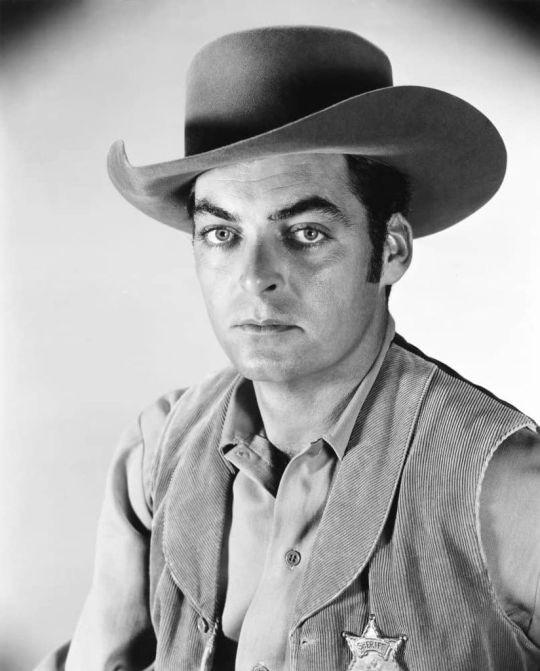
He built engines and chassis for Indy cars, Sprint cars and Midgets. His work was said to be very high quality and because of this he became well known in racing circles.
After 2 years of building cars he started racing. They say he was fast, especially in midgets. One quote I've heard about him, "If Mack passes you, that's it. You won't be able to get in front of him."
AJ Foyt had a bad habit of physically fighting anyone who beat him. When he tangled with my grandpa though, he regretted it.

One of the cars that my grandpa built was used in the Clark Gable movie To Please A Lady (1950). It can be seen in the first race sequence around 9 minutes in. It is car #36 with the square grille and "M" insignia. He never knew that his car was used in a movie, but he would have been honored.
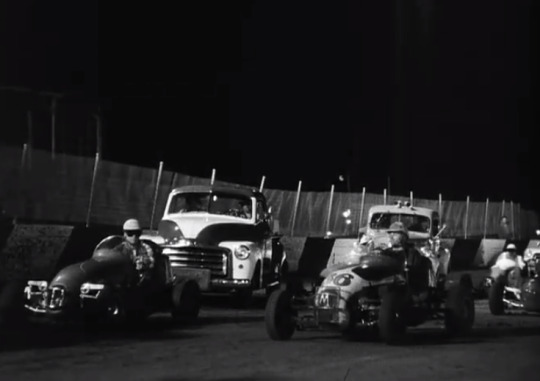
Among the racers that have driven his cars are Bill and Eli Vukovich, Parnelli Jones and Bobby Unser.
He retired from racing and became a mechanic for a Ford dealership around 1960 because his wife requested that he change careers. He never really talked about racing ever again after that.
He was also a rodeo rider for a time in the 1930's and 40's.
Also among his well known friends were Henry Hull and Arthur Hunnicut, but I don't know how he met them.


That's all I can really remember at the moment. I'll probably update this later as I learn more. Bonus Facts:
Bill and Eli Vukovich and Parnelli Jones (who went by the name Rufus) used to spend weekends at my family's house when they were racing near town. They used to get drunk on cheap beer, start good natured fist fights and break up my grandmother's furniture. But they never failed to replace the broken coffee tables and chairs.
Bill Vukovich was at my family's house for dinner just two weeks before his fatal crash at Indianapolis on May 30 1955
#roy disney#prohibition#bootlegging#rory calhoun#indy cars#sprint cars#motor racing#racing#aj foyt#to please a lady#1950#clark gable#bill vukovich#eli vukovich#parnelli jones#bobby unser#henry hull#arthur hunnicut#indy 500
1 note
·
View note
Text
Title: The Evolution of Automobiles: From Horseless Carriages to Autonomous Vehicles
In the grand tapestry of human innovation, few inventions have shaped society as profoundly as the automobile. From its humble beginnings as a noisy, smoke-belching contraption to the sleek, efficient machines of today, cars have undergone a remarkable evolution. Let's take a journey through time and explore the fascinating history of the automobile.
The Birth of an Idea:
The concept of a self-propelled vehicle dates back to the 18th century, but it wasn't until the late 19th century that practical automobiles began to emerge. In 1885, Karl Benz built the world's first automobile powered by an internal combustion engine, laying the foundation for the modern car.
The Age of Innovation:
The early 20th century saw rapid advancements in automotive technology. Henry Ford revolutionized the industry with the introduction of the assembly line, making cars more affordable and accessible to the masses. Innovations such as electric starters, hydraulic brakes, and automatic transmissions further transformed the driving experience.
Rise of Performance and Style:
The post-war era ushered in an era of automotive glamour and speed. Sports cars like the Jaguar XK120 and the Chevrolet Corvette captured the public's imagination, while luxury brands like Cadillac and Mercedes-Benz set new standards of comfort and refinement.
Toward a Greener Future:
As concerns over environmental sustainability grew, car manufacturers began to explore alternative fuel sources and more efficient technologies. Hybrid and electric vehicles gained popularity, offering drivers cleaner and quieter transportation options. Today, advancements in battery technology and renewable energy are driving the shift towards a greener automotive industry.
The Dawn of Autonomy:
In recent years, the rise of artificial intelligence and machine learning has paved the way for autonomous vehicles. Companies like Tesla, Google, and Uber are investing heavily in self-driving technology, promising a future where cars can navigate city streets and highways without human intervention. While the full realization of autonomous driving is still on the horizon, the potential benefits in terms of safety, efficiency, and accessibility are immense.
Conclusion:
The automobile has come a long way since its inception, evolving from a novelty to an essential aspect of modern life. As we look to the future, the continued innovation and adaptation of cars will undoubtedly shape the way we live, work, and travel. Whether it's through cleaner energy sources, advanced safety features, or fully autonomous driving, the journey of the automobile is far from over. As we embrace these changes, we can only imagine what the next chapter in automotive history will bring.
1 note
·
View note